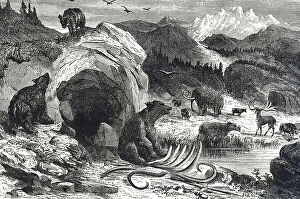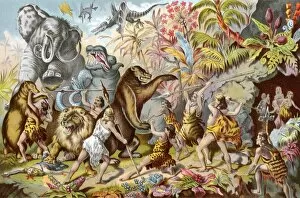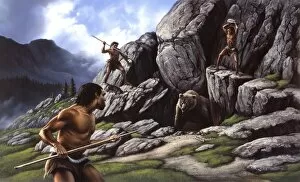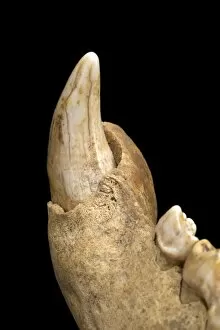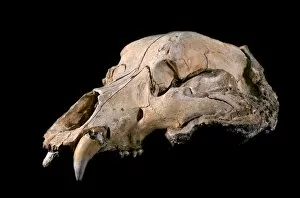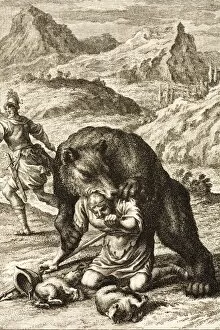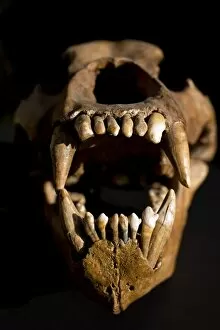Cave Bear Collection
The cave bear, a prehistoric giant of the Pleistocene Epoch, roamed the ancient landscapes of Europe
All Professionally Made to Order for Quick Shipping
The cave bear, a prehistoric giant of the Pleistocene Epoch, roamed the ancient landscapes of Europe. Through artwork and engravings, we catch glimpses of this magnificent creature that once dominated the ideal European landscape during the post-glacial period. In one engraving, we see an array of prehistoric animals including the Irish Elk, Woolly Elephant, Hairy Rhinoceros, Urus, Cave Bear, and Cave Hyena. These majestic creatures coexisted in harmony before their eventual extinction. Another depiction takes us back to a time when prehistoric men bravely battled great cave bears. The intense struggle between man and beast is captured with vivid detail in this artwork from 1907. It serves as a testament to our ancestors' courage and resourcefulness in facing these formidable adversaries. Neanderthals also encountered cave bears in their daily lives. In one scene depicted through artistry, Neanderthal humans find themselves confronted by a massive cave bear. This encounter showcases both the danger and awe-inspiring nature of these ancient beasts. Fossils provide further insight into the physical characteristics of cave bears. Molars reveal their diet while lower jaws give us a glimpse into their growth patterns as evidenced by juvenile remains. Each bone fragment tells its own story about these incredible creatures that once roamed our planet. The legacy of the cave bear lives on through art and science alike. Its presence in our history reminds us of Earth's rich biodiversity throughout time and inspires wonder at what other mysteries may lie buried within our past.


